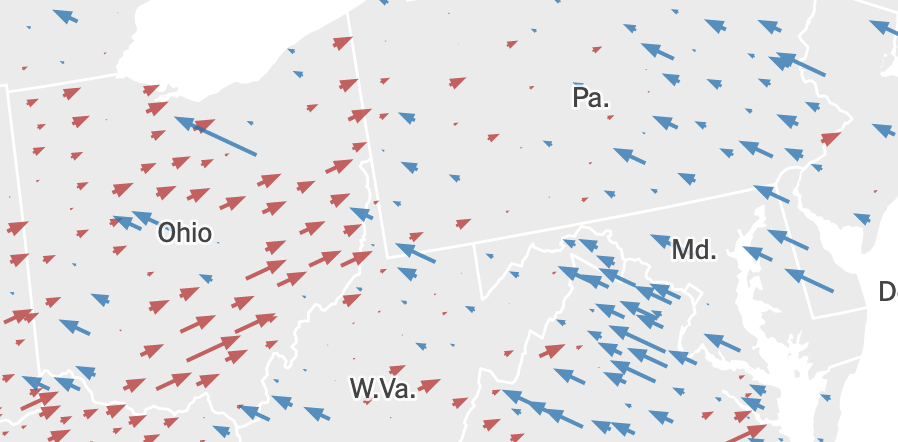
Let's look at the change in turnout *so far,* based on number of votes cast compared to 2016 turnout.
Let's start nationwide, at a high level: areas in purple have counted *fewer votes* than 2016. Most of those areas still just have lots of votes left to count
Let's start nationwide, at a high level: areas in purple have counted *fewer votes* than 2016. Most of those areas still just have lots of votes left to count

As you can see, there's a ton of vote left to count in Chicago, New York state, and parts of MD/CA. I'd guess these ballots generally break Democratic, padding Biden's national lead.
One thing you might have overlooked: Philly.
For all the complaints about the count there... it's still the only place in PA that's counted fewer ballots than 2016
For all the complaints about the count there... it's still the only place in PA that's counted fewer ballots than 2016

Similarly, it should be no surprise that they have a lot of vote to count--whether it's in absentee or provisional ballots.
I'd also note something similar in Wisconsin. Yeah, there's higher turnout in Milwaukee County. It also happens to be up by less than the state as a whole 

This is part of what seems to me to be a broader pattern, at least at the county-level: black turnout did not increase to the same extent as non-black turnout. It was up! But the black share of the electorate probably fell, as non-black turnout increased more
I should note that the county-level data is not perfect for evaluating black turnout, especially since many majority black counties in the so-called 'black belt' are in population decline. But those counties stand out for relatively small turnout increases, as well
Nationwide, a simple regression on the county-level data suggests a 8 percent increase in black turnout, v. 19 for non-black turnout.
This is a very rough way of looking at things--importantly, doesn't control for population growth, and has ecological inference issues
This is a very rough way of looking at things--importantly, doesn't control for population growth, and has ecological inference issues
In part as a result, turnout also seems to have increased more in areas where Trump won in 2016 than those where Clinton won. This analysis excludes all of the places that I don't think have finished... but I could be wrong about that so call this very preliminary
It does seem to me that most of the precinct-level data that I've seen, though, suggests a *relative* decline in black turnout. That's true in the data we collected in GA/NC/FL for the needle. Also true in Philly here.
https://twitter.com/sixtysixwards/status/1325493010805690368?s=20
• • •
Missing some Tweet in this thread? You can try to
force a refresh



